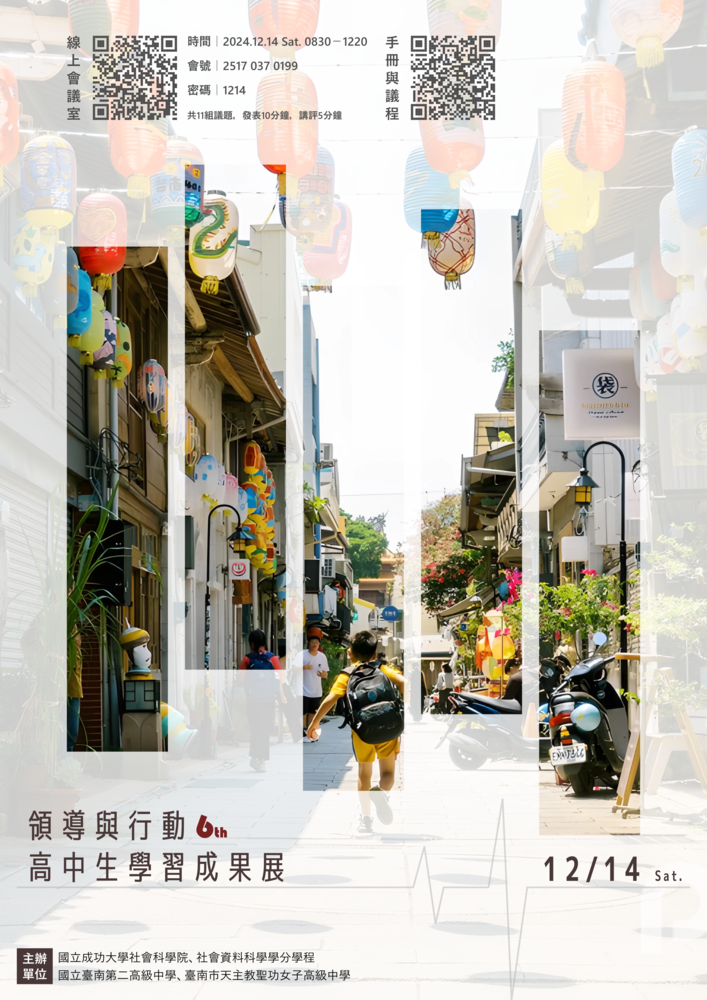SDG11
"From Monuments to Preservation" NCKU Museum Launches Cultural Heritage Protection Lecture Series Alongside Restoration Project
Since its inception in 2007, the National Cheng Kung University Museum (NCKU Museum) has been promoting knowledge related to cultural heritage through exhibitions, lectures, and other activities in the field of higher education. However, the museum's exhibition base building, completed in 1933, has been used by various units over different periods and is now outdated and insufficient for modern use. Therefore, since July 2023, the building has been undergoing renovation. The NCKU Museum has also made the restoration site a teaching demonstration area for the preservation of monuments and artifacts. In the first half of 2024, the museum planned a series of thematic lectures titled "From Monuments to Artifacts Preservation: Case Studies on the Preservation of Taiwan's Cultural Heritage." In May and June, three experts and scholars were invited to share their insights from the perspectives of restoration personnel, documentation, and investigation. These include architect Xin-Yi Zhong's lecture on "Who Restores Monuments: The Case of Ming-Guan Fu, a Master in Traditional Roofing," NCKU Ph.D. candidate Yan-Long Lin's presentation on "The Restoration Report of NCKU’s Li-Xian Building," and Assistant Professor Sheng-Fa Xu from Taipei National University of the Arts discussing "What Needs to Be Done Before Restoration? Starting from Investigation and Research." The lectures highlight NCKU's efforts in promoting education and research in cultural heritage preservation, providing valuable professional knowledge and practical experience to teachers, students, and the public.
The first lecture by architect Xin-Yi Zhong, titled "Who Restores Monuments: The Case of Taiwan’s Master Roofer Ming-Guan Fu," emphasized the importance of having qualified contractors and personnel for various restoration sites. Zhong also shared her experience in conducting traditional roofing courses for the Bureau of Cultural Heritage, Ministry of Culture, noting the challenging journey of a traditional roofer from skill development to becoming an independent master.
In the second lecture, Yan-Long Lin, a Ph.D. candidate in NCKU's Architectural History and Cultural Heritage Preservation program, shared his observations and experiences in the restoration of NCKU’s Li-Xian Building. Lin mentioned that as restoration work progresses, many historically valuable artifacts are often discovered, which can increase the complexity and duration of the restoration project. These discoveries require extensive discussion and research to ensure the success of the restoration. He also stressed the importance of having professional record-keepers to meticulously document the process, providing valuable references for future researchers and restorers.
Before cultural heritage can enter the restoration and reutilization stages, thorough research and investigation are crucial. This involves professional on-site measurement and investigation to clarify issues and assess the building's value. These steps help in planning future restoration and reutilization methods, serving as an essential reference for subsequent contractors. The third lecture, "What Needs to Be Done Before Restoration? Starting from Investigation and Research," delivered by Assistant Professor Sheng-Fa Xu from the Taipei National University of the Arts, aimed to help attendees understand the key points of investigation and assessment.
The NCKU Museum hopes that the three "From Monuments to Artifacts Preservation" lectures will enhance the understanding of teachers, students, and the public regarding the procedures and tasks involved in the restoration of historical buildings and artifacts. The museum also plans to launch more related activities in the second half of the year and invites teachers, students, and the public to participate actively.
Official Website|National Cheng Kung University Museum
YOUTUBE Channel|National Cheng Kung University Museum
The first lecture by architect Xin-Yi Zhong, titled "Who Restores Monuments: The Case of Taiwan’s Master Roofer Ming-Guan Fu," emphasized the importance of having qualified contractors and personnel for various restoration sites. Zhong also shared her experience in conducting traditional roofing courses for the Bureau of Cultural Heritage, Ministry of Culture, noting the challenging journey of a traditional roofer from skill development to becoming an independent master.
In the second lecture, Yan-Long Lin, a Ph.D. candidate in NCKU's Architectural History and Cultural Heritage Preservation program, shared his observations and experiences in the restoration of NCKU’s Li-Xian Building. Lin mentioned that as restoration work progresses, many historically valuable artifacts are often discovered, which can increase the complexity and duration of the restoration project. These discoveries require extensive discussion and research to ensure the success of the restoration. He also stressed the importance of having professional record-keepers to meticulously document the process, providing valuable references for future researchers and restorers.
Before cultural heritage can enter the restoration and reutilization stages, thorough research and investigation are crucial. This involves professional on-site measurement and investigation to clarify issues and assess the building's value. These steps help in planning future restoration and reutilization methods, serving as an essential reference for subsequent contractors. The third lecture, "What Needs to Be Done Before Restoration? Starting from Investigation and Research," delivered by Assistant Professor Sheng-Fa Xu from the Taipei National University of the Arts, aimed to help attendees understand the key points of investigation and assessment.
The NCKU Museum hopes that the three "From Monuments to Artifacts Preservation" lectures will enhance the understanding of teachers, students, and the public regarding the procedures and tasks involved in the restoration of historical buildings and artifacts. The museum also plans to launch more related activities in the second half of the year and invites teachers, students, and the public to participate actively.
Official Website|National Cheng Kung University Museum
YOUTUBE Channel|National Cheng Kung University Museum

Architect Xin-Yi Zhong introduces students to the basic components of traditional Han-style roofing.
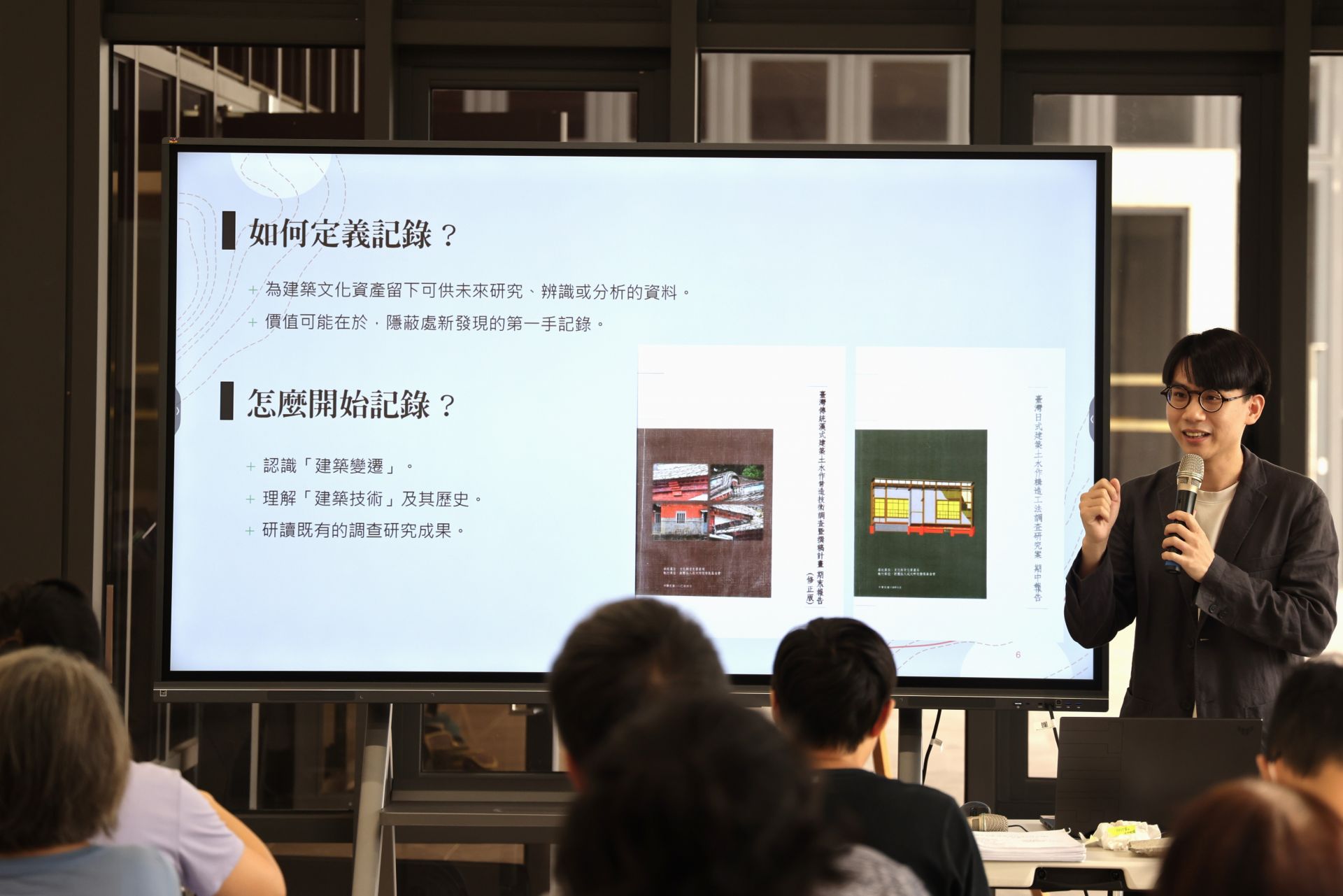
Ph.D. candidate Yan-Long Lin shares with students how to document the process.
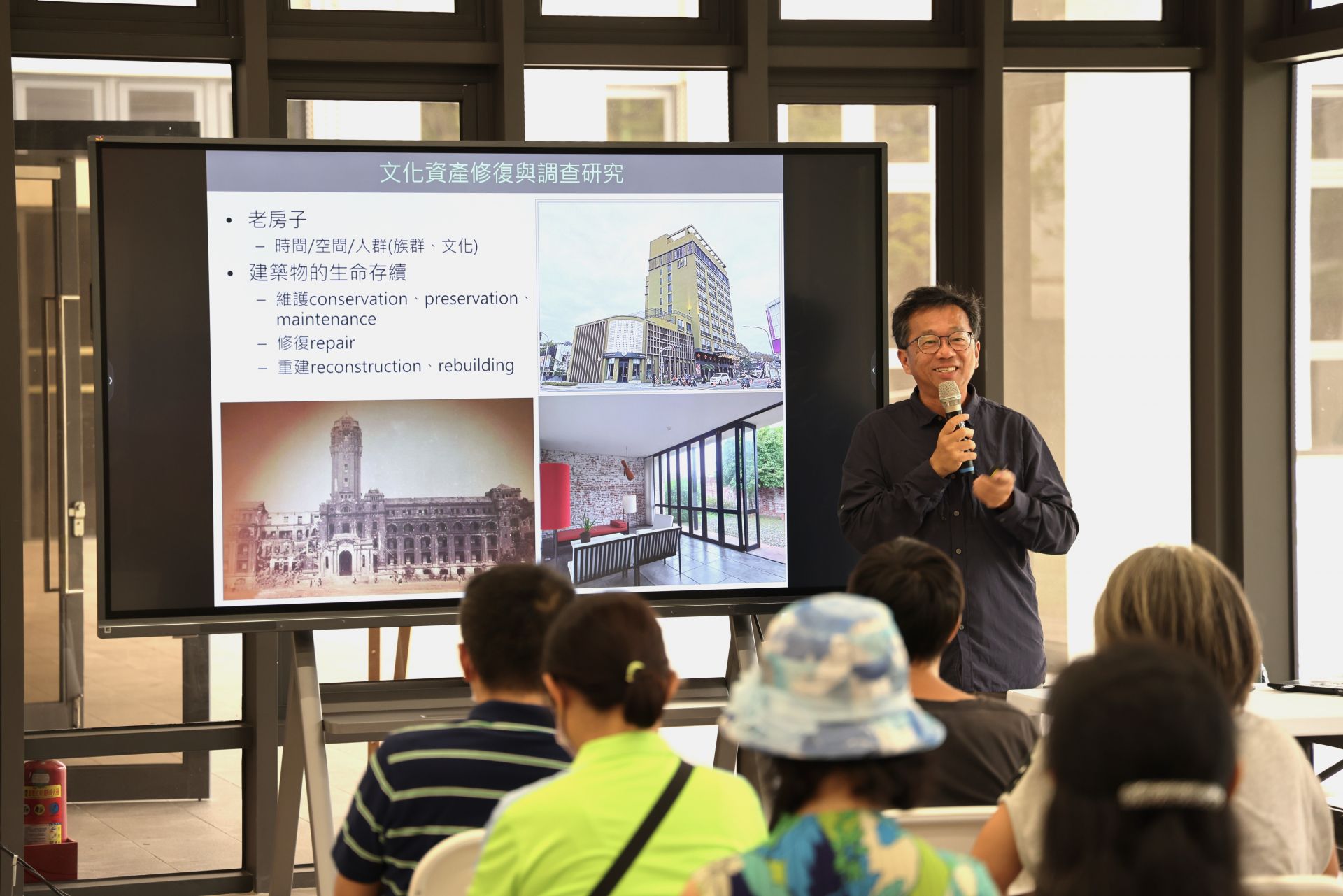
Assistant Professor Sheng-Fa Xu from the Institute of Architecture and Cultural Heritage at Taipei National University of the Arts shares "What Needs to Be Done Before Restoration? Starting from Investigation and Research."
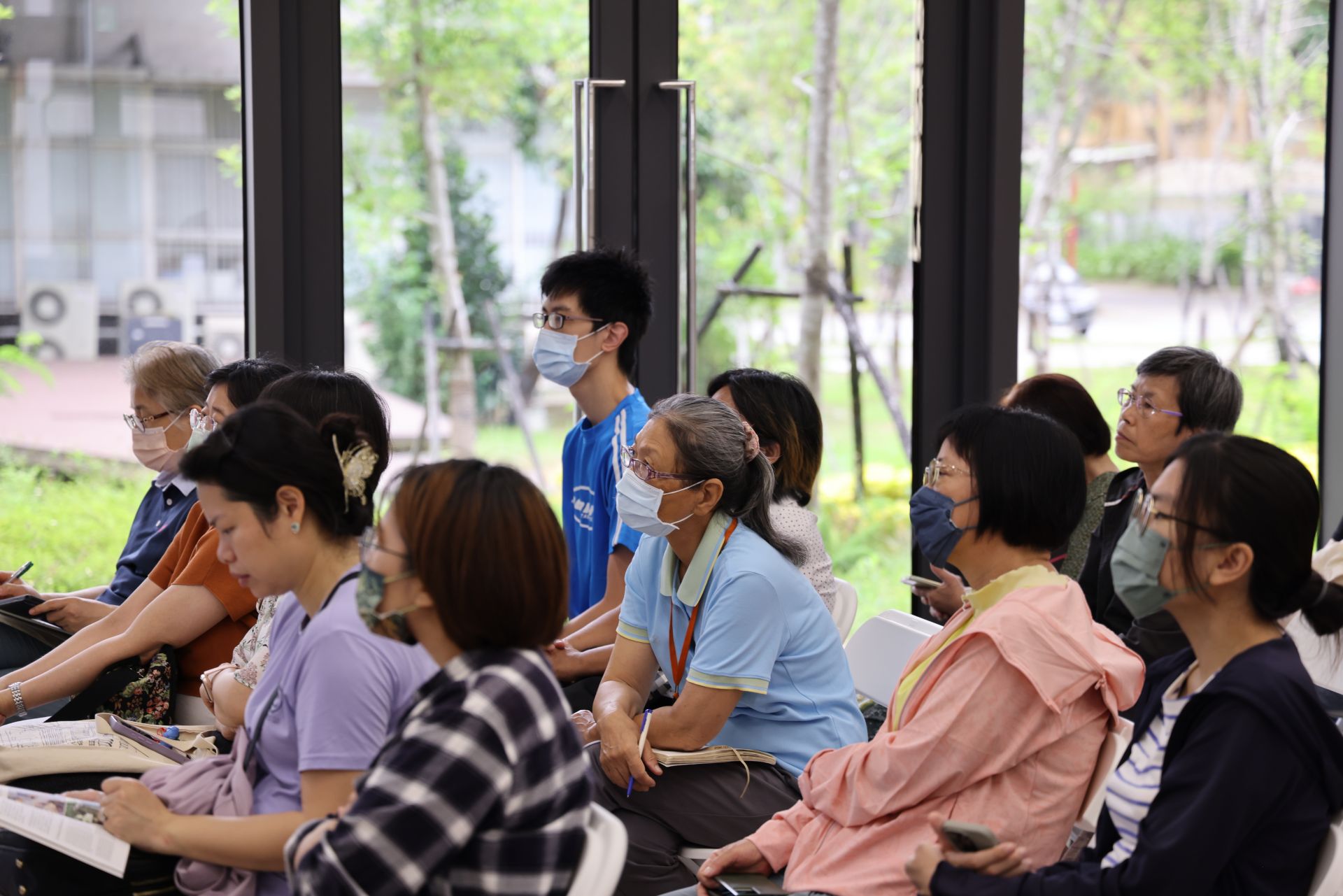
Participants listen to the procedures and tasks involved in the restoration process of historical buildings and artifacts.
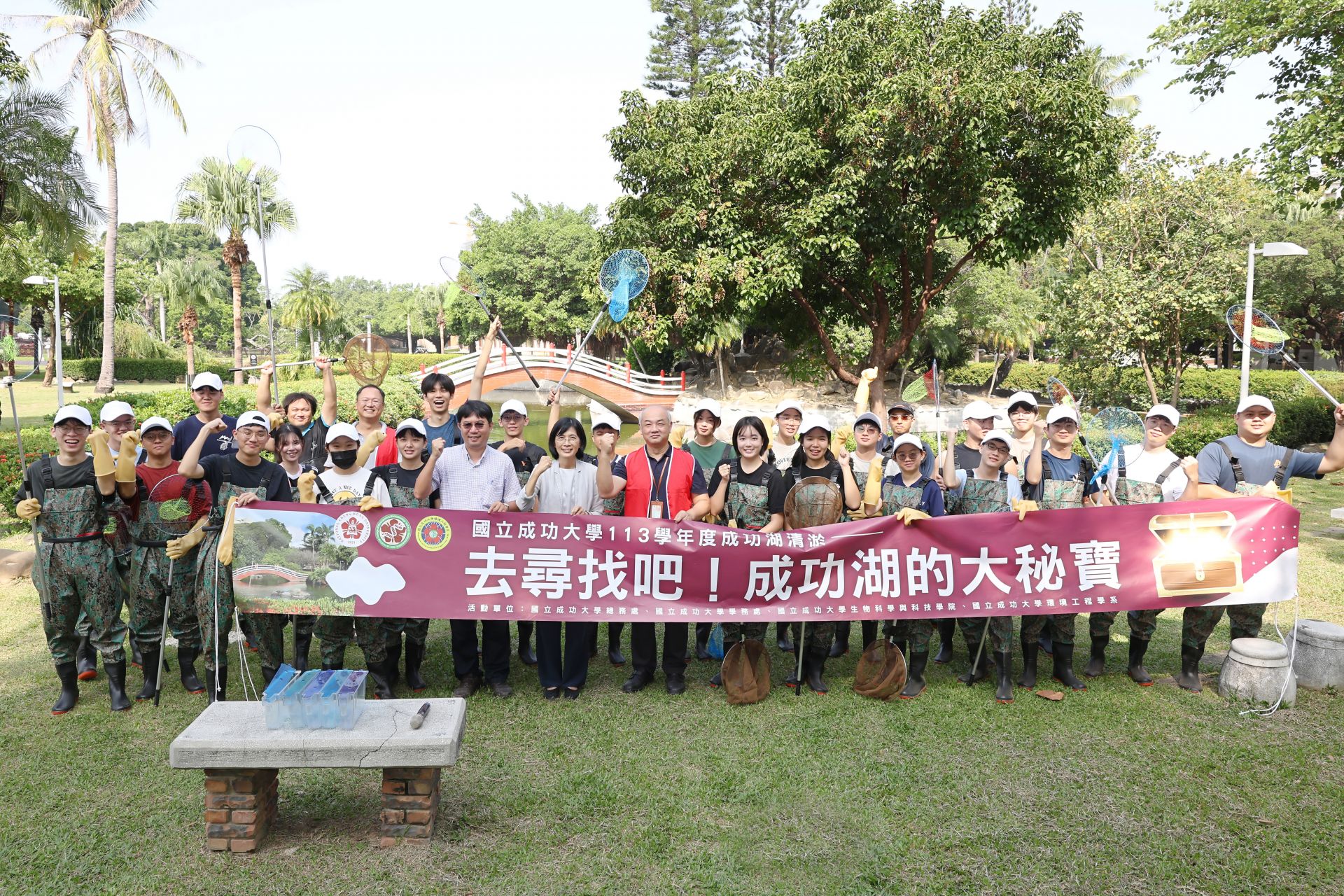
SDG11Cheng-Kung Lake Dredging Project: Integrates Sustainable Development and Ecological Education
View more
SDG11NCKU Students and Tainan City collaborated in “The Glimmering Light: Longqi Local Imagery Lighting Installation Art Project”
View more